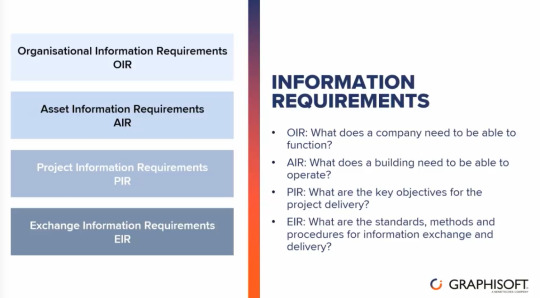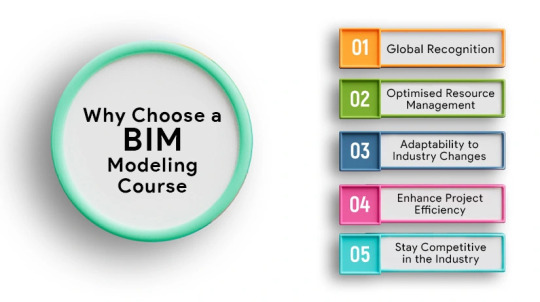#GRAPHISOFT
Explore tagged Tumblr posts
Text
Padrões organizacionais do ecossistema BIM [GA]
Entrar na era BIM não significa apenas passar a utilizar um novo software no escritório. É muito mais do que isso, significa adentrar a um novo ecossistema de trabalho, posicionar sua empresa dentro de um novo ambiente de negócios, observar outras regras e padrões, mudar a forma de trabalhar e de se relacionar com outras partes (clientes, fornecedores, parceiros e poder público,…

View On WordPress
#AIM#AIR#ambiente BIM#ambiente comum de dados#básico#BIM#Building Together#CDE#Collaborate#começo#comunicação#desafios#ecossistema BIM#EIR#escritório#escritório de arquitetura#escritório de engenharia#GA#gerente#gerente do projeto#Gestão Arquitetônica#gestão da arquitetura#gestão de informações de operação#gestão de informações do ativo#gestão de informações do projeto#gestão de informações operacionais#gestão do escritório#Graphisoft#início#ISO 19650
0 notes
Text
Graphisoft Revolutionizes Architecture with AI Visualizer for Creative Design Exploration
Graphisoft, a leading Building Information Modeling (BIM) software developer, has integrated an AI-powered visualizer, Archicad AI Visualizer, into its flagship software. This AI tool, powered by Stable Diffusion, enables architects to generate detailed 3D visualizations in the early design stages, fostering creativity and productivity. The tool seamlessly integrates with Archicad, allowing…

View On WordPress
0 notes
Text
BIM Software Solutions for Modern HVAC Applications
As the HVAC industry continues to evolve in 2025, Building Information Modeling (BIM) has become an indispensable tool for professionals seeking to optimize design, installation, and maintenance processes. For HVAC engineers, contractors, and technicians, selecting the right BIM software can significantly impact project efficiency and outcomes. Let’s explore the most effective BIM solutions for…
#3D modeling#augmented reality#Autodesk Revit#automation#Bentley AECOsim#BIM#BIM workflows#building information modeling#Building performance#building systems#clash detection#cloud collaboration#cooling loads#decision matrix#digital twin#duct design#energy analysis#Energy efficiency#fabrication documentation#Graphisoft ArchiCAD#heating loads#hvac#HVAC design software#HVAC engineering#interoperability#mechanical engineering#mechanical systems#MEP#MEP coordination#mixed reality
0 notes
Text
Ma Óbudán sétáltam egy nagyot a párommal.

Épül a bigdzsordzsiz lakótelepe a Waterfront City. A már átadott épületekben úgy minden huszadik lakásban van fent függöny. A párom szerint egy csomó kínai vásárol az ilyenekben lakást, aztán nem költöznek be. Amúgy @annacsii nem csak a kémény maradt meg, hanem van még valami régi épület is - itt jobbra:

Aztán tovább északra.

Van ilyen legál graffiti fal a Harisnyagyárnál.

Az év járdája díjas helyszín: 5 méter járda, amin eljuthatsz a lezáró korlátig.

A Gázgyár felé a platánsor most is gyönyörű volt. Nagyon szeretem ezt a sétányt, jó lenne ide az aszfaltút helyett valami promönád.

Ezek a házak valamikor a gázgyári tisztviselőknek épültek. 3-4 lakás van egy-egy ilyen villaépületben. Még ma is egész jól őrzik az összképet, egy kis garázs bontással és kerítésfestéssel egészen szép állapotokat lehetne előidézni.

A gázgyári épületekből csak ezt újították fel sajnos. Ezzel is kellene valamit kezdeni, kezdve egy régészeti feltárással és egy talajcserével. Eszméletlen életet lehetne ide hozni, a Graphisoft Park és a Római-part közé.

Nagyon szépek voltak ma a felhők.

A Graphisoft Parktól a főút felé esik a gázgyári dolgozóknak emelt lakótelep, erős Wekerle vibe-okkal.

39 notes
·
View notes
Text

ARCHICAD is a leading Building Information Modeling (BIM) software developed by GRAPHISOFT. It is widely used by architects, designers, engineers, and construction professionals for creating detailed architectural designs, documenting building projects, and facilitating collaboration throughout the design and construction process. Registration Link: https://www.thesiswritingsupport.com/bim-archicad-workshop/
2 notes
·
View notes
Text
Nem igaz, hogy nincsenek innovatív magyar vállalkozások, csak megpróbálnak radar alatt maradni, elkerülni, hogy a NER felfigyeljen rájuk. Aki teheti, külföldre viszi a cégét vagy azt a részét, ami mozdítható, például az üzleti központját – mutat rá egy kortünetre Bojár Gábor üzletember, az innovatív hazai vállalkozások őstörténetét író Graphisoft alapítója a Della friss adásában.
2 notes
·
View notes
Text
Cloud-Based BIM: Transforming the AEC Industry

Building Information Modeling (BIM) has significantly transformed the Architecture, Engineering, and Construction (AEC) industry by improving project visualization, coordination, and overall efficiency. However, the integration of cloud computing has taken BIM to an entirely new level by enabling real-time collaboration, data accessibility, and seamless project management. Cloud-based BIM allows stakeholders, including architects, engineers, and contractors, to access and work on BIM models from anywhere, ensuring streamlined workflows and enhanced communication. This blog explores the key benefits, challenges, and future implications of cloud-based BIM solutions.
How Cloud-Based BIM Benefits Architects, Engineers, and Contractors
Cloud-based BIM offers many advantages to professionals in the AEC industry. Here’s how it helps:
1. Real-Time Collaboration
Before cloud-based BIM, architects, engineers, and contractors had to send files back and forth, often leading to confusion over which version was the latest. With cloud-based BIM, multiple users can work on the same model at the same time, ensuring that everyone has access to the most up-to-date information. This reduces errors and saves time.
2. Increased Efficiency and Productivity
When all project data is stored in one place and updated in real-time, tasks such as clash detection, design reviews, and coordination become much faster and more efficient. Cloud-based BIM eliminates the need for manual file transfers and speeds up decision-making, allowing teams to complete projects more quickly and accurately.
3. Cost Savings
Setting up traditional BIM systems requires expensive servers and IT maintenance. With cloud-based BIM, companies can use subscription-based services instead of investing in costly infrastructure. This is especially beneficial for small and medium-sized firms that need flexible, budget-friendly solutions.
4. Access from Anywhere
With cloud-based BIM, professionals can access project models and data from any device with an internet connection. Whether working from the office, on-site, or remotely, users can view and edit BIM models in real-time, making project management more flexible and efficient.
How Cloud-Based BIM Enhances Real-Time Collaboration and Coordination
One of the most powerful features of cloud-based BIM is its ability to enhance real-time collaboration and coordination among project stakeholders. Unlike traditional BIM workflows, where files must be manually shared and updated, cloud-based BIM ensures that updates are instantly reflected for all team members. This reduces the chances of miscommunication and allows for more efficient decision-making.
Cloud-based BIM platforms also offer automated clash detection, helping teams identify and resolve conflicts in the design phase before they become costly issues during construction. Additionally, these platforms integrate with various design and construction software, such as Revit, AutoCAD, and Navisworks, ensuring interoperability and smoother workflows.
Top Cloud-Based BIM Platforms: Features and Comparisons
There are several cloud-based BIM platforms available today, each offering unique features designed to meet the needs of AEC professionals. Some of the most popular solutions include:
Autodesk Construction Cloud – A unified platform combining BIM 360, Autodesk Build, Autodesk Takeoff, and other tools to streamline workflows, enhance collaboration, and improve construction project outcomes.
Autodesk BIM 360 – A comprehensive BIM platform that offers cloud storage, real-time collaboration, and project insights. It seamlessly integrates with Autodesk products like Revit and Navisworks.
Trimble Connect – Designed for construction and design professionals, Trimble Connect provides collaboration tools that enhance communication and coordination. It integrates with SketchUp and Tekla.
Graphisoft BIMcloud – A solution specifically designed for Archicad users, Graphisoft BIMcloud enables real-time model synchronization and version control.
Newforma Konekt – Focused on issue tracking and coordination management, “Newforma Konekt” was earlier known as “BIM Track” which improves communication between stakeholders and enhances project efficiency.
Procore – A widely used construction management software that offers BIM integration, document management, scheduling, and real-time collaboration, helping teams improve project efficiency and reduce errors.
Each of these platforms provides distinct advantages, allowing firms to choose a solution that best fits their project requirements.
Data Security and Privacy in Cloud-Based BIM Workflows
Data security is a significant concern when adopting cloud-based BIM solutions. To ensure secure workflows, leading cloud BIM providers implement robust security measures such as end-to-end encryption, which protects data during transmission and storage. Additionally, role-based access control (RBAC) ensures that only authorized personnel have access to sensitive project information, minimizing the risk of unauthorized access.
Regular backups are another critical aspect of cloud-based BIM security. These backups prevent data loss in the event of system failures or cyberattacks. Furthermore, compliance with industry standards such as ISO 19650 ensures that cloud-based BIM solutions meet stringent data management and security protocols.
Cloud-Based BIM for Remote Project Management and Site Coordination
Remote project management has become increasingly essential in the construction industry, and cloud-based BIM plays a pivotal role in enabling it. With live site updates, contractors and project managers can access the latest construction models from the field, eliminating the need for constant physical meetings or manual data transfers.
Cloud-based BIM also supports issue reporting and tracking, allowing stakeholders to document and resolve design changes in real-time. This enhances communication between site teams and design offices, ensuring that all project participants are aligned with the latest developments.
The Role of AI and Automation in Cloud-Based BIM Solutions
Artificial Intelligence (AI) and automation are playing an increasingly important role in cloud-based BIM solutions. AI-driven capabilities such as automated clash detection help detect design inconsistencies early, reducing rework and improving project accuracy. Predictive maintenance powered by AI analytics can foresee potential construction issues and suggest preventive measures, leading to better project outcomes.
Generative design, another AI-driven innovation, allows architects to create optimized design models based on specific constraints and project goals. This not only accelerates the design process but also results in more efficient and innovative building solutions.
Cloud-Based BIM vs. Traditional BIM: A Comparative Analysis
When comparing cloud-based BIM to traditional BIM, several key differences emerge. Traditional BIM relies on local servers and manual file-sharing, whereas cloud-based BIM provides real-time multi-user collaboration with centralized data storage. The cost factor also differs significantly, as traditional BIM setups require high infrastructure investments, while cloud-based BIM operates on a subscription model, making it more affordable.
Another critical difference is software updates. Traditional BIM requires manual installations and periodic updates, whereas cloud-based solutions receive automatic updates, ensuring users always have access to the latest features and security patches.

Challenges and Considerations When Adopting Cloud-Based BIM
While cloud-based BIM offers numerous benefits, it also presents certain challenges. One of the primary concerns is internet dependency, as a stable and high-speed internet connection is essential for smooth operation. In locations with limited connectivity, this can become a barrier to adoption.
Data security concerns also persist, as cloud-based systems are potential targets for cyberattacks. Firms must ensure they use secure platforms with encryption and access control mechanisms to mitigate these risks. Additionally, a learning curve exists for professionals unfamiliar with cloud-based workflows, requiring training and adaptation efforts.
Integration with existing systems can also be challenging, particularly for firms that use legacy BIM software. Ensuring seamless compatibility and data transfer between old and new systems is crucial for a successful transition.
The Future of Cloud-Based BIM
Blockchain for Security and Data Integrity Blockchain technology will improve BIM by providing a decentralized, tamper-proof ledger for storing and verifying data. This enhances transparency, data integrity, and security, ensuring traceability in design changes and streamlining project approvals and payments through smart contracts.
5G Connectivity for Real-Time Collaboration 5G will enable ultra-fast, low-latency data transfers, allowing real-time collaboration on large BIM files. This will improve remote access to BIM models, support AI and IoT integration, and make cloud-based BIM more accessible to firms of all sizes.
IoT for Smart Construction IoT sensors will provide real-time data on construction sites, monitoring parameters like structural integrity, energy usage, and safety. Integrating IoT with BIM will enable predictive maintenance, improve safety, and enhance productivity by optimizing material and equipment usage.
VR and AR for Immersive BIM Experiences Virtual Reality (VR) will allow stakeholders to walk through BIM models in 3D before construction begins, aiding design validation. Augmented Reality (AR) will overlay BIM models onto real-world sites for better coordination and reduced errors, enhancing stakeholder engagement and project accuracy.
AI and Machine Learning for Predictive Analytics AI and machine learning will analyze BIM data to predict delays, cost overruns, and automate tasks like clash detection. These technologies will also generate optimized designs, reducing material waste and improving decision-making for more efficient project delivery.
Sustainability and Carbon Tracking in BIM Cloud-based BIM will help reduce carbon footprints by integrating tools for automated carbon footprint analysis and real-time environmental impact tracking. This will assist in selecting eco-friendly materials and ensuring compliance with green building standards, promoting sustainable construction practices.
Conclusion
In conclusion, cloud-based BIM is changing the way construction projects are managed and executed. Unlike traditional methods, cloud-based BIM allows project teams to work together in real time, no matter where they are located. This means architects, engineers, and contractors can access and update project information instantly, leading to better collaboration and fewer mistakes.
One of the biggest advantages of using cloud-based BIM is the ability to store all project data in one central location that everyone can access. This makes it easier to share important documents, plans, and updates, which helps to avoid delays and miscommunications. Teams can also track progress more effectively and quickly spot any potential issues before they become problems.
Another key benefit is the cost savings and flexibility it offers. Cloud-based solutions don’t require expensive hardware or software, as everything can be accessed online. This helps businesses save money while still benefiting from powerful tools. Plus, as cloud storage is scalable, businesses can increase or decrease their usage depending on project needs, making it a flexible solution for all types of projects.
Overall, cloud-based BIM is making construction projects more efficient, collaborative, and cost-effective. As technology continues to advance, it will become an even more important tool for businesses that want to stay competitive and deliver high-quality projects on time and within budget.
#CloudBasedBIM#CloudBasedBIMBenefitsArchitects#CloudBasedBIMChallenges#CloudBasedBIMBenefitsContractors#Cloudbasedarchitecturemodel
1 note
·
View note
Text
Build Smarter: How ArchiCAD Is Changing the Way Architects Design
Architecture isn’t just about drawing lines or stacking bricks. It’s about envisioning spaces that people will live, work, and grow in. And in today’s fast-moving digital world, that vision is shaped by the tools architects use. One of the most advanced tools in modern design is ArchiCAD — a complete architectural software suite that’s helping designers bring their ideas to life more efficiently and accurately than ever.

If you’re into architecture, urban planning, or interior design, you might’ve heard the name floating around. But what exactly is ArchiCAD, and why is it making waves in the industry?
Let’s dive into how it works — and why it matters.
What Is ArchiCAD?
ArchiCAD is a BIM (Building Information Modeling) and CAD (Computer-Aided Design) software created by Graphisoft, a Hungarian company known for its innovation in digital architecture. It’s available for both Mac and Windows, and it’s built to do everything from 2D floor plans to 3D modeling and advanced rendering.
Think of it as an all-in-one digital toolbox for architects and designers. Instead of juggling different apps for drawings, 3D models, and documentation, ArchiCAD wraps all of that into a single platform.
Why Architects Are Turning to ArchiCAD
Architectural design has evolved. Gone are the days when everything was sketched by hand or drawn in separate tools. Now, professionals need something that can visualize, analyze, and coordinate every part of the design process — and that’s exactly what ArchiCAD delivers.
Here’s what makes it stand out:
1. Seamless 2D + 3D Design
With ArchiCAD, any change you make in a 2D floor plan automatically updates in the 3D model — and vice versa. No duplicate work. No inconsistencies. It’s fast, clean, and incredibly efficient.
2. BIM Capabilities
Every line, wall, and object in ArchiCAD isn’t just a graphic — it’s part of a smart digital model. That means your design includes detailed data about materials, sizes, energy usage, and more. It’s like building a digital twin of your project that lives on your screen.
3. High-End Visuals
Thanks to built-in rendering features (like CineRender), users can generate photo-realistic images of their projects right inside ArchiCAD. It’s perfect for presenting concepts to clients, creating walkthroughs, or just geeking out on beautiful visualizations.
4. Easy Team Collaboration
ArchiCAD’s Teamwork feature lets multiple people work on the same project at once, whether they’re in the same office or halfway around the world. You can reserve elements, sync changes, and keep everything up to date in real time.
5. Smart Customization
Need to create a custom window or a unique column? ArchiCAD supports parametric design and scripting tools, so you can build intelligent objects that adjust as your project evolves.
Who Is ArchiCAD For?
Architects designing residential or commercial buildings
Urban planners working on neighborhood layouts or infrastructure
Interior designers planning furniture, layouts, and finishes
Construction professionals who want accurate documentation
Design students learning modern BIM workflows
Basically, if you’re shaping physical spaces, ArchiCAD can help.
Real-World Advantages
Less Rework, More Results
Changes made late in the design process often lead to costly revisions. ArchiCAD’s smart modeling prevents that by keeping everything connected and up-to-date from start to finish.
Impress Clients with Visuals
Want to show your client how their new café will look before it’s built? With ArchiCAD, you can create stunning renders and even walkthrough animations to bring your ideas to life.
Better Project Coordination
Because ArchiCAD models are rich in data, they’re easier to share with engineers, contractors, and other consultants. Everyone stays on the same page — literally.
Features You’ll Love
Drag-and-drop interface for faster workflows
Vast object libraries (furniture, lighting, structural components)
Compatibility with tools like Rhino, Grasshopper, and Revit
Built-in quantity takeoffs and construction documentation
Cloud support for project sharing and backups
It’s the kind of platform that grows with your needs — from small home designs to complex commercial builds.
Why Software Like This Matters
Design isn’t just about how things look — it’s about how well they function. Tools like ArchiCAD help bridge the gap between creative ideas and technical precision. They allow designers to:
Catch design issues early
Optimize material use
Integrate sustainability features
Save time on revisions
Deliver better results overall
In a world where design timelines are tighter than ever and expectations are sky-high, the right software isn’t optional. It’s essential.
Final Thought
Whether you’re an established architect, a freelancer just starting out, or a student planning your future in design, ArchiCAD offers a powerful platform to help you do more, faster — and with fewer compromises.
It’s a tool built not just for drafting, but for imagining and delivering smarter spaces.
Want to learn more or explore how ArchiCAD can work for your team? Visit: https://www.tridaxsolutions.com/product/archicad/
0 notes
Text
BIM Software: Revolutionizing the Future of Building Design and Construction
Introduction
The architecture, engineering, and construction (AEC) industry is undergoing a transformative shift, thanks to the evolution of BIM Software. Building Information Modeling (BIM) Software is no longer a luxury but a necessity for modern infrastructure development. As the demand for smarter, more sustainable buildings grows, the role of BIM Software in optimizing design, enhancing collaboration, and reducing project costs is more critical than ever.
In this article, we explore how BIM Software is revolutionizing the construction landscape, its core features, major players in the market, and how institutions like Technostruct Academy are preparing the next generation of professionals to lead this digital transformation.
What is BIM Software?
BIM Software is a digital tool that enables architects, engineers, and construction professionals to create, manage, and share a building's data throughout its lifecycle. From concept design and visualization to construction and facility management, BIM Software serves as a central hub for intelligent decision-making.
Unlike traditional 2D CAD tools, BIM Software creates intelligent 3D models that include geometry, spatial relationships, geographic information, and properties of building components. This holistic approach results in fewer design conflicts, better coordination, and faster project delivery.
Core Features of BIM Software
The widespread adoption of BIM Software is largely due to its powerful features, which include:
3D Modeling and Visualization BIM Software provides detailed 3D visualizations, allowing stakeholders to understand complex designs in an intuitive way.
Clash Detection Automatic identification of design conflicts between different building systems (e.g., mechanical vs. structural) saves time and money.
Parametric Design Changes to one component automatically update related parts, maintaining consistency throughout the model.
Quantity Takeoffs BIM Software can generate precise material estimates, helping with budgeting and procurement planning.
Lifecycle Management BIM extends beyond design and construction, offering tools for facility operation and maintenance post-handover.
Major Players in the BIM Software Market
Some of the most prominent BIM Software solutions used globally include:
Autodesk Revit: A market leader that supports architectural design, MEP, and structural engineering workflows.
Graphisoft ArchiCAD: Known for its user-friendly interface and strong visualization capabilities.
Bentley Systems (AECOsim Building Designer): Popular for infrastructure projects and large-scale industrial work.
Trimble Tekla: Focused heavily on structural engineering and steel detailing.
The Global Shift Toward BIM Software
Governments and regulatory bodies in several countries have mandated the use of BIM Software for public infrastructure projects. For instance, the UK Government's BIM Level 2 mandate has spurred significant adoption across Europe. Similarly, India’s Smart Cities initiative has encouraged increased reliance on BIM Software for urban development.
This shift is not just regulatory but also economic. BIM Software can reduce total project costs by up to 20% by minimizing errors, optimizing workflows, and ensuring efficient resource utilization.
Technostruct Academy: Building BIM Leaders of Tomorrow
As BIM Software becomes a staple in construction and infrastructure development, the need for skilled professionals is skyrocketing. This is where Technostruct Academy plays a pivotal role.
Technostruct Academy offers industry-relevant training in BIM Software, preparing students and working professionals with practical, job-ready skills. With hands-on modules in tools like Revit, Navisworks, and AutoCAD, the academy bridges the gap between theoretical knowledge and real-world application.
What sets Technostruct Academy apart?
Industry-Vetted Curriculum: Designed by AEC professionals with years of experience in BIM Software implementation.
Project-Based Learning: Students work on real-life projects to build a strong portfolio.
Mentorship: Access to BIM Managers and engineers from Technostruct LLC, a leading BIM consultancy firm in the US and India.
Placement Support: Graduates benefit from career guidance and job placement assistance in leading construction firms.
BIM Software in Different Project Phases
The influence of BIM Software spans across every phase of a building’s life:
Design Phase: Architects use BIM to visualize and refine designs, integrating feedback from stakeholders.
Construction Phase: Contractors leverage BIM models to plan logistics, reduce rework, and streamline on-site coordination.
Post-Construction: Facility managers utilize BIM data for maintenance scheduling, asset tracking, and renovations.
Integration with Emerging Technologies
Modern BIM Software is now integrating with technologies such as:
Artificial Intelligence (AI): AI-enhanced BIM tools predict risks and optimize design layouts.
Virtual and Augmented Reality (VR/AR): Enhance stakeholder engagement and on-site training.
IoT (Internet of Things): Sensor data integrated with BIM models allows for real-time building performance monitoring.
Cloud Collaboration: Teams across the globe can work simultaneously on BIM models, increasing efficiency.
Future Trends in BIM Software
6D and 7D BIM: Beyond 3D modeling, 6D BIM integrates sustainability data while 7D focuses on facility management.
Generative Design: Algorithms automatically generate design options based on set constraints, saving time and resources.
BIM for Renovation: Scan-to-BIM solutions use laser scanning to create BIM models of existing structures, aiding renovation and retrofit projects.
Conclusion
BIM Software is not just a trend—it’s a cornerstone of the future of AEC. It empowers professionals to create smarter, more sustainable buildings, reduce costs, and improve project outcomes. As the demand for BIM expertise surges, institutions like Technostruct Academy are equipping professionals with the tools and skills to lead the digital revolution in construction.
Whether you're a student, a mid-career engineer, or a company aiming to upskill your team, learning BIM Software is a strategic investment. And with industry-backed training from Technostruct Academy, you're well-positioned to thrive in the future of building design and construction.
0 notes
Text
Graphisoft Archicad 26 28.1.1 Free Full Activate
0 notes
Text
Why Every Engineer Should Take BIM Online Courses
In the modern construction landscape, BIM online courses are proving to be one of the most efficient ways for architects, engineers, and project managers to upgrade their skills. These courses not only teach the fundamentals of Building Information Modeling (BIM) but also prepare professionals for real-world challenges—without having to attend in-person training. From design coordination to cost control, learning BIM online is a smart investment in your career.
Why BIM Skills Are Essential:
Building Information Modeling (BIM) is no longer optional. It's a global standard adopted by governments and private developers to manage building and infrastructure projects. With BIM, teams can visualize, simulate, and coordinate every aspect of a construction project—from design to operation—leading to better outcomes and fewer surprises on site.

Case Studies:
Case Study 1: Nagpur Metro Rail Project, India
Challenge: The Nagpur Metro is a large-scale urban transit project involving multiple contractors and consultants. The project had strict timelines and required seamless coordination between architecture, structural, and MEP teams.
Solution: The general contractor mandated that junior engineers and site supervisors complete Autodesk BIM online courses. These included Revit and Navisworks training modules.
Impact:
Improved collaboration between design and site teams
22% reduction in design conflicts due to better clash detection
Faster approvals using 3D visualizations shared with authorities
Case Study 2: Oslo Airport Expansion, Norway
Challenge: The Oslo Airport expansion aimed to create a sustainable terminal with minimal disruption to ongoing operations.
Solution: All project participants were trained in BIM workflows through online learning provided by Graphisoft and LinkedIn Learning. The focus was on ArchiCAD and IFC data management.
Impact:
Efficient coordination of prefabricated elements using BIM models
30% reduction in project delays caused by miscommunication
Enhanced sustainability reporting through energy simulation tools
Case Study 3: Affordable Housing in South Africa
Challenge: A non-profit organization initiated a low-cost housing project in Cape Town, requiring fast execution with limited resources.
Solution: A local engineering firm enrolled its junior staff in short BIM courses focusing on 3D modeling and 4D scheduling using BIM 360. The goal was to digitize the entire workflow.
Impact:
Faster quantity take-offs and cost estimation
Increased transparency in project reporting to donors
Completion time reduced by 18% compared to similar past projects
Case Study 4: University Campus Design in Australia
Challenge: A leading university in Melbourne planned a new campus with complex structural and HVAC systems. The architectural firm faced difficulties coordinating with subcontractors remotely.
Solution: The firm’s team members undertook BIM online certification programs in Revit and Navisworks to align all disciplines.
Impact:
Real-time collaboration through cloud-based models
Successful integration of architectural, MEP, and structural plans
25% reduction in RFIs (Request for Information) from contractors
What You Learn in a BIM Online Course:
BIM online courses typically include:
Software training: Autodesk Revit, Navisworks, BIM 360, ArchiCAD
Modeling techniques: Architecture, MEP, and structural modeling
Project applications: Clash detection, 4D time-lining, and 5D cost estimation
Standards: LOD, COBie, and IFC file management
Practical assignments: Simulations based on real projects
Many platforms like Autodesk, Coursera, and NIBT also provide certification, which helps professionals validate their skills globally.
Conclusion:
The rise of digital construction has made BIM a must-have skill for today’s professionals. Whether you're working on a high-speed rail project in India or a green campus in Australia, understanding BIM tools and workflows can set you apart. With flexible, accessible BIM online courses, there’s never been a better time to invest in your future.
0 notes
Text
ArchiCAD Crackeado v28.1.0 Build 4001 + Chave De Licença PT
diskgenius professional 5.1.0.653 + license key este software é a ferramenta prática e avançada de modelação de informação de construção disponível para arquitectos. Você projetará seus desenhos em formatos bidimensionais e tridimensionais e, em seguida, usará uma variedade de ferramentas visuais e iconografia para gerar lógica a partir deles. Além disso, ArchiCAD você tem a capacidade de alternar entre os modos bidimensionais e tridimensionais a qualquer momento e observar a construção de seu abrigo em uma variedade de proporções.
É possível projetar uma estrutura inteira usando o ArchiCAD PT-BR Download Crackeado e, em seguida, utilizar os recursos do sistema, que incluem Visualização em 3D, ajuste da quantidade de luz à noite e durante o dia e visualização da estrutura de múltiplas perspectivas. It é possível que o programa de computador Graphisoft ArchiCAD tenha sido a aplicação inicial desenvolvida para o redesenho bidimensional da estrutura. A aprendizagem em malha é agora uma característica desta aplicação que é aplicada a modelos BIM.
1 note
·
View note
Text
MEP Software Market Trends, Innovations, and Strategic Insights 2032
MEP Software Market was valued at USD 3.80 billion in 2023 and is expected to reach USD 9.20 Billion by 2032, growing at a CAGR of 10.34% from 2024-2032.
The MEP Software Market is witnessing rapid growth, driven by the increasing adoption of digital solutions in the construction industry. The demand for efficient Mechanical, Electrical, and Plumbing (MEP) design and project management tools is rising due to growing infrastructure projects worldwide. With advancements in Building Information Modeling (BIM) and cloud-based technologies, MEP software is becoming an essential tool for architects, engineers, and contractors.
The MEP Software Market continues to expand as companies seek innovative solutions to streamline project planning, enhance accuracy, and reduce operational costs. The integration of AI, automation, and real-time collaboration tools is further transforming the industry. Governments and private sectors are increasingly investing in smart infrastructure projects, further fueling the demand for MEP software.
Get Sample Copy of This Report: https://www.snsinsider.com/sample-request/3803
Market Keyplayers:
Autodesk - Revit MEP
Trimble - Tekla Structures
Hexagon - Smart MEP
Dassault Systèmes - CATIA
Bentley Systems - OpenBuildings Designer
Nemetschek Group - Allplan
Siemens - Desigo CC
AVEVA - AVEVA Everything 3D (E3D)
Procore Technologies - Procore MEP
Graphisoft - ARCHICAD
CYPE - CYPECAD MEP
MagiCAD - MagiCAD for Revit
IES - IESVE
Fiatech - Techno-Structural MEP
Kreon - Scan-to-BIM
Vico Software - Vico Office
ZWSOFT - ZWCAD
Cadalyst - AutoCAD MEP
Bluebeam - Revu
BIMobject - BIMobject Cloud
Market Trends Driving Growth
1. Growing Adoption of BIM Integration
MEP software is increasingly integrated with Building Information Modeling (BIM) to improve collaboration, minimize design conflicts, and enhance project efficiency.
2. Rise of Cloud-Based MEP Solutions
Cloud technology is enabling real-time access to MEP project data, improving remote collaboration and reducing software maintenance costs for businesses.
3. AI and Automation Enhancing Design Efficiency
Artificial Intelligence (AI) and automation tools are streamlining complex calculations, optimizing resource management, and improving decision-making in MEP projects.
4. Sustainability and Green Building Initiatives
With the global push for energy-efficient buildings, MEP software is incorporating features that enable better energy modeling and sustainable design planning.
Enquiry of This Report: https://www.snsinsider.com/enquiry/3803
Market Segmentation:
By Software
BIM MEP Software
CAD MEP Software
By Application
Mechanical
Electrical
Plumbing
By Services
Advice and engineering
Maintenance and support
System integration
Market Analysis
Key factors influencing market growth include:
Technological Advancements: AI-driven modeling, cloud computing, and IoT integration are revolutionizing MEP design and analysis.
Rising Urbanization and Smart Cities: Governments worldwide are investing in infrastructure projects, increasing the demand for advanced MEP solutions.
Growing Construction Industry: Rapid expansion in commercial, residential, and industrial construction is fueling market demand.
Regulatory Compliance and Safety Standards: Stricter regulations are driving the need for MEP software to ensure compliance with building codes and safety guidelines.
Future Prospects: What Lies Ahead?
1. Expansion of AI and Machine Learning in MEP Software
Advanced AI algorithms will further optimize design accuracy, reduce errors, and enhance predictive maintenance capabilities.
2. Increased Adoption of IoT-Enabled Smart Systems
The integration of IoT with MEP software will allow real-time monitoring of building systems, improving efficiency and reducing operational costs.
3. Growth in Modular and Prefabricated Construction
MEP software will play a crucial role in the rising trend of modular and prefabricated construction, enabling precise and automated MEP system design.
4. Global Expansion and Emerging Markets
The demand for MEP software is rising in developing economies, where rapid infrastructure development is creating new opportunities for market players.
Access Complete Report: https://www.snsinsider.com/reports/mep-software-market-3803
Conclusion
The MEP Software Market is poised for continued growth, driven by advancements in AI, cloud computing, and smart building technologies. As the construction industry embraces digital transformation, MEP solutions will play a crucial role in optimizing design, improving efficiency, and ensuring regulatory compliance. With increasing global investments in infrastructure and sustainability, the future of the MEP software market looks promising.
About Us:
SNS Insider is one of the leading market research and consulting agencies that dominates the market research industry globally. Our company's aim is to give clients the knowledge they require in order to function in changing circumstances. In order to give you current, accurate market data, consumer insights, and opinions so that you can make decisions with confidence, we employ a variety of techniques, including surveys, video talks, and focus groups around the world.
Contact Us:
Jagney Dave - Vice President of Client Engagement
Phone: +1-315 636 4242 (US) | +44- 20 3290 5010 (UK)
#MEP Software Market#MEP Software Market Scope#MEP Software Market Growth#MEP Software Market Trends
0 notes
Text
Casa IGN: anexo de lazer
Casa IGN Brasília/DF Março de 2025 Área: 36 m2 de área fechada Projeto executado em BIM (Graphisoft Archicad)

View On WordPress
#anexo com espaço gourmet#anexo de casa#anexo de lazer#anexo de piscina#anexo de vestiários#anexo jardim#anexo lazer#anexo no jardim#Archicad#arquiteto Brasília#arquiteto DF#arquiteto e urbanista#Arquitetura#área verde#BIM#casa#portfolio#projeto
1 note
·
View note